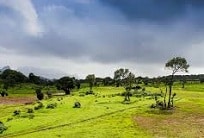 The classical Arabic word mawsim can be translated as "season." This term was used above all with reference to that time favorable for navigation thanks to the winds .
The classical Arabic word mawsim can be translated as "season." This term was used above all with reference to that time favorable for navigation thanks to the winds .
Mawsim came to Arabic as mawsam , and this to Portuguese as moução or monção . The concept arrived in our language as monsoon : this is the name given to the periodic wind that, especially in the Indian Ocean , blows in one direction in certain months and in the opposite direction in others.
During the northern hemisphere summer season, the monsoon brings abundant rainfall . In winter , however, it is a cold and dry wind.
When the Earth's surface heats or cools, it does so more quickly than water. In the summer, thus, the surface has a higher temperature than the ocean, which causes the rise of air over the land and the generation of a low pressure zone. The wind, meanwhile, blows from high-pressure regions to low-pressure regions. The result: a continuous wind during the hottest season that advances from the ocean and brings rain caused by moist air that rises and then cools.
In the winter, the temperature of the ocean is higher than the land because it takes longer to cool. As the air rises, it creates an area of low pressure in the water , and the wind blows from the surface towards it.
It should be noted that monsoons are positive by contributing to the irrigation of the land , although they can also become negative when they produce floods and favor the proliferation of insects that transmit diseases .
Over the years, scientists have understood monsoon winds in greater depth, expanding their definition to include virtually any phenomenon that is associated with the weather cycle that occurs annually on both tropical and continental continents. the subtropics of Australia, Asia, Africa and South America , in which the adjacent oceans and seas also participate. It is precisely in these places where the most drastic climate changes occur.
From a broader point of view, the so-called monsoon systems have always been linked to the formation of supercontinents, as occurred with the great Pangea , whose climates were extreme.
 In India we can find the summer and winter monsoon. In the boreal zone of the Indian subcontinent, more precisely in the Thar Desert , during summer the temperature reaches high peaks from morning to afternoon, and the surface air generates a local depression when it rises. This is the point at which the circulation originates and is completed by the coasts of the Indian Ocean.
In India we can find the summer and winter monsoon. In the boreal zone of the Indian subcontinent, more precisely in the Thar Desert , during summer the temperature reaches high peaks from morning to afternoon, and the surface air generates a local depression when it rises. This is the point at which the circulation originates and is completed by the coasts of the Indian Ocean.
In the Himalayas, the humid and warm air that comes from the sea converges, both from the west and the east, and there the air rises and cools, giving rise to the formation of clouds and the emergence of rain .
From the month of September onwards, daytime temperatures decrease in the boreal zone and the days end earlier. The Siberian anticyclone , a mass of dry air with a considerably low temperature, sometimes below -40 degrees Celsius, arises at Lake Baikal. The trade winds appear precisely to the south of said anticyclone and head towards the intertropical convergence zone .
Monzón , finally, is a common surname in several countries . In this context, we can remember the Argentine boxer Carlos Monzón (1942-1995), world middleweight champion between 1970 and 1977 and sentenced to prison for the murder of his partner, Alicia Muñiz .
